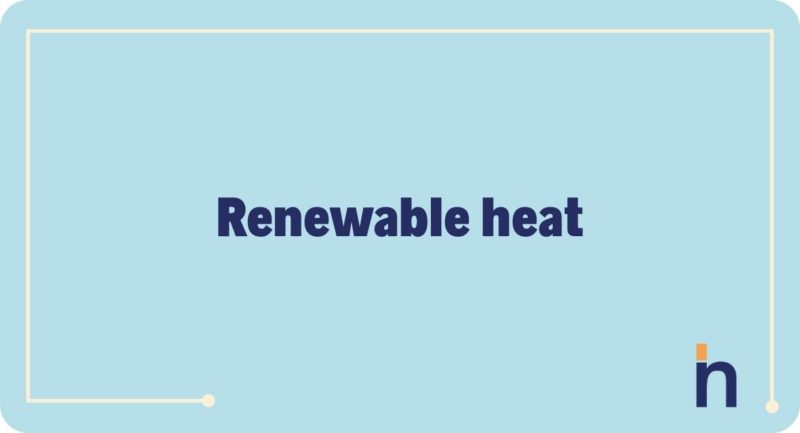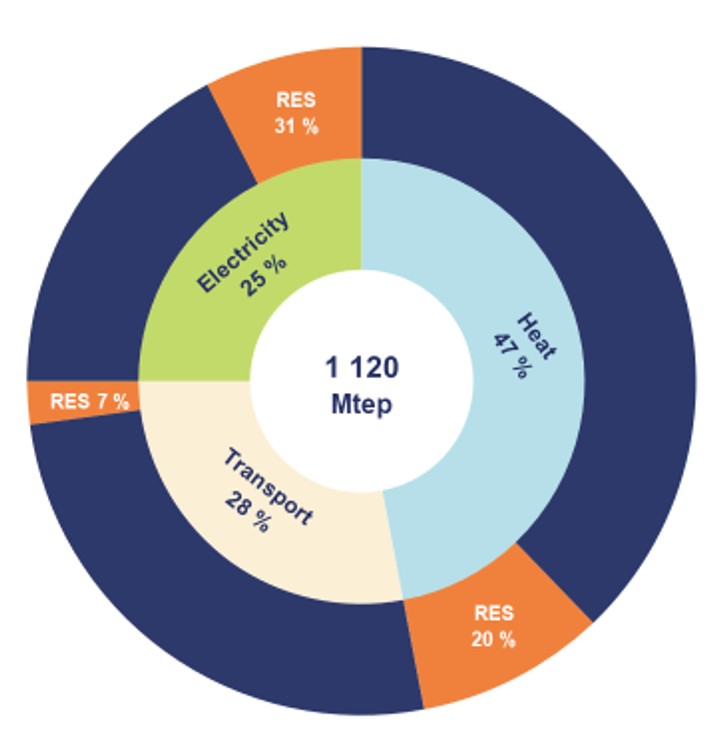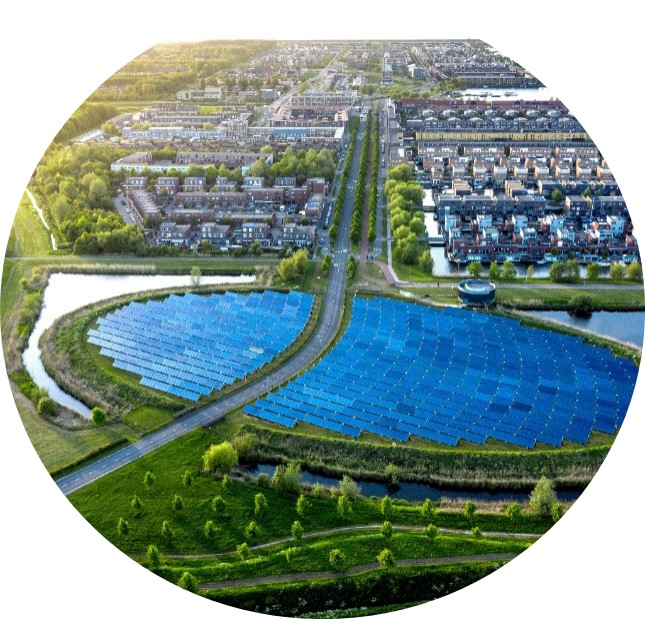- Posts
- Renewable heat
All you need to know about renewable heat!
Hugues Defreville
First things first: what exactly is heat?
What is heat? What is its share in global energy consumption? What is at stake in its production? How can it be qualified as “renewable”?
We explain it all to you!
Today, when we think about the energy we consume, we often think first of the electricity we use every day at home, or the fuel we put in our cars. However, the energy we consume is also and mainly heat!
Did you know?
The need for heat accounts for half of the final energy consumption!
What is this final energy consumption?
It is the total energy consumed by end-users such as households, service companies, industry and agriculture. In other words, it is the last link in the chain, the last state in which energy is used for its final transformation into movement, heat, cold or light for example.
Heat is a major share of energy consumption

Here is the breakdown of final consumption in the European Union between the main energy uses: electricity, transport (cars, trains, planes, etc.) and heat.
The use of energy in the form of heat represents more than 47% and is the major consumer of primary energy consumption (a primary energy source is a form of energy available in nature before any transformation).
At Newheat, what is our view of this situation?
Heat, otherwise known as “thermal” or “calorific” energy, represents 50% of humanity’s energy needs, and 80% of it is produced by fossil fuels: it is time to act!
What is the use of heat?
Heat consumption can be broken down into 2 main uses:
- Heat used in industry (or industrial heat)
- Heat used to heat buildings and housing
Heat used in the industry:
In the industry, most of the processes involved in creating a product or transforming a material require the use of heat energy. For example to cook, melt, dry, etc.
We only have to look around us to find products that all require a lot of heat for their production: metal, plastic, wood, paper, glass, plaster, foods, chemicals, bricks, etc. Nothing (or almost nothing) is produced or transformed without thermal energy.

To better understand the challenges of these industrial heat needs (which in the European Union represent 47% of heat consumption), it is important to note that they vary greatly depending on the industrial sector, particularly in terms of intensity (volume) but also temperature level.
Thus, some sectors, such as iron and steel production, will consume a lot of thermal energy and especially so-called “high temperature” heat (above 400°C). Other sectors, such as the food industry, consume mainly “low temperature” heat (below 100°C).

Heat used for buildings and housing:
Heating needs of buildings and housing correspond mainly to home heating, but also to the production of domestic hot water and cooking for food. They represent 48% of the heat consumption in the European Union and are mostly composed of “low temperature” heat needs.
For those who have been following the story so far, the remaining 5% of heat consumption, apart from industry and buildings and housing, is mainly in the agricultural sector.

Now, what exactly is renewable heat?
Before addressing what is considered “renewable” in heat production, it is important to talk about the only energy that is absolutely neutral for our environment: the energy we do not consume!
Indeed, before trying to produce thermal energy in the most virtuous way possible, the first thing to do is to reduce its consumption. No heat production solution, however renewable, will have a zero impact on the environment: the construction of these “renewable” power plants will inevitably require the consumption of raw materials and other energy resources.
The first action is to reduce energy consumption
This saving of thermal energy can be achieved in many ways: by improving the insulation of buildings and housing, or by improving the processes of industrial sites, for example by recovering the energy that is sometimes lost during an industrial process (uninsulated furnace, hot combustion air evacuated to the outside at 200°C…).
It is also possible to recover the thermal energy released during the combustion of a waste product that needs to be disposed of (the most common example being the case of Waste-to-Energy Units (WTEU), which burn our household waste). This is what is known as waste heat, recovery and recycling.
Yet once we have saved and recovered this energy, we still need to provide heat from a primary source to run our factories and heat our buildings and homes.
Renewable heat is a term used to describe a number of very different technologies, all of which have proven their relevance and effectiveness. They all need to be developed to reduce our dependence on fossil fuels and reduce our impact on the environment:
- Wood combustion, or “biomass”, in all its forms: whether for domestic, collective, industrial or tertiary use.
- Geothermal energy, which consists of recovering the internal heat energy of the earth, and which can be carried out at great depth (a few kilometres, to reach high temperatures), or at shallow depths (100 to 200 metres, where the ground remains at 12-15°C all year round).
- Solar heat (or solar thermal), which consists of capturing the thermal energy of the sun’s rays (not to be confused with solar photovoltaic energy, which uses the photoelectric effect to transform the photons emitted by the sun into electricity).
- Heat pumps, which transfer thermal energy from a cold source (to be cooled) to a hot source (to be warmed), reversing the natural direction of spontaneous thermal energy transfer. However, these means of production use a source of energy to operate (electricity or gas). The renewable nature of this source must therefore be carefully checked before they can also be considered as renewable means.
- Renewable gases, which can consist of the production of methane by using rather liquid organic matter (such as waste and slurry) which is degraded by micro-organisms (methanisation), or by transforming solid organic matter via thermochemical processes (pyro-gasification). Note also the possibility of producing hydrogen by electrolysis of water (and methane by methanation if desired): in this situation, gas is then a vector, the energy source being the electricity consumed by the electrolysis, and the question of its renewable nature thus being shifted to the electricity sector
Well then what is Newheat doing in favor or renewable heat?
We aim to contribute to the development of the most virtuous renewable heat sources, in order to offer an energy alternative to build a sustainable future.
You can now have a look at all our solar thermal power plant projects. They are already supplying reliable and competitive heat, without any CO2 emissions, to district heating networks and industrial sites worldwide!